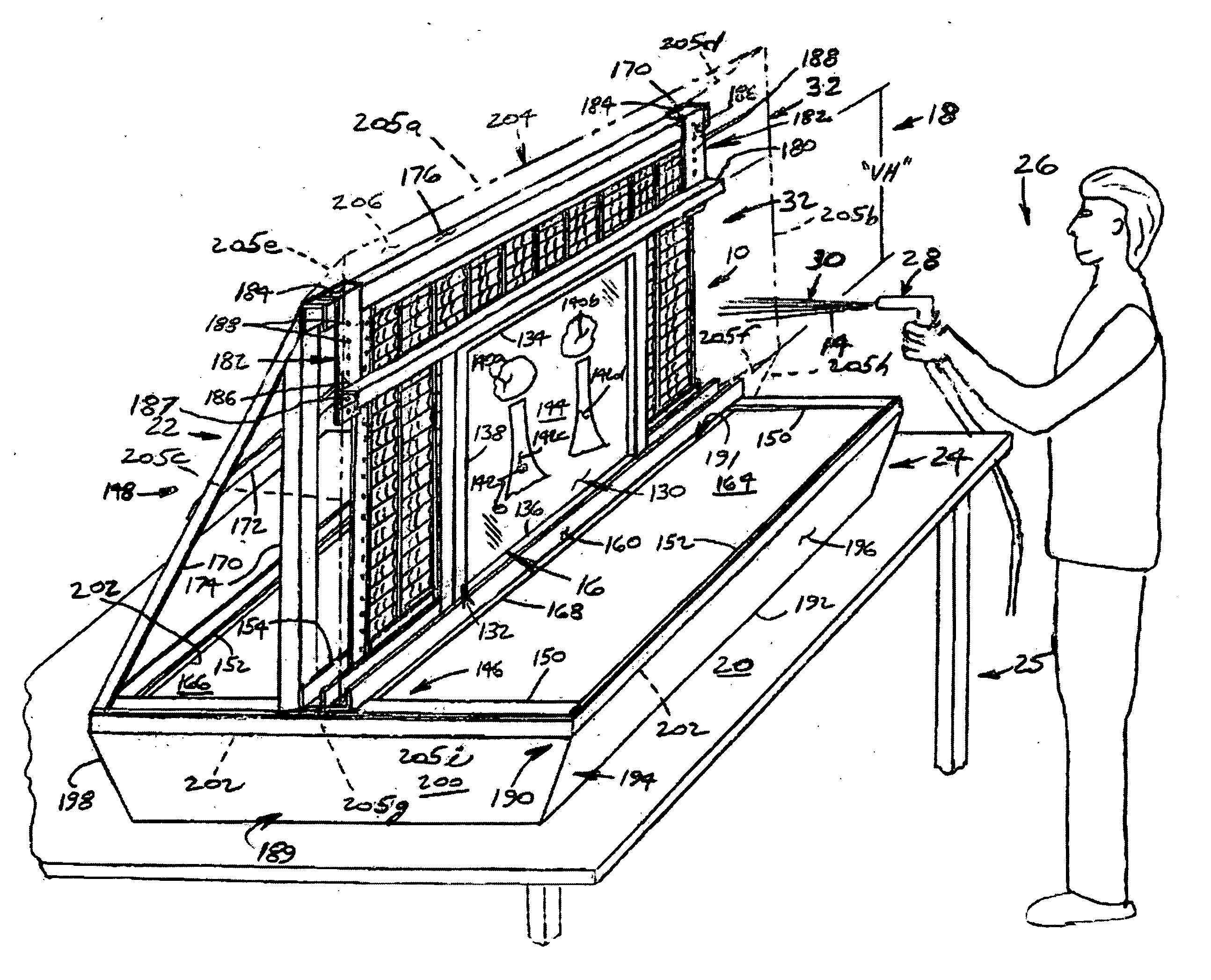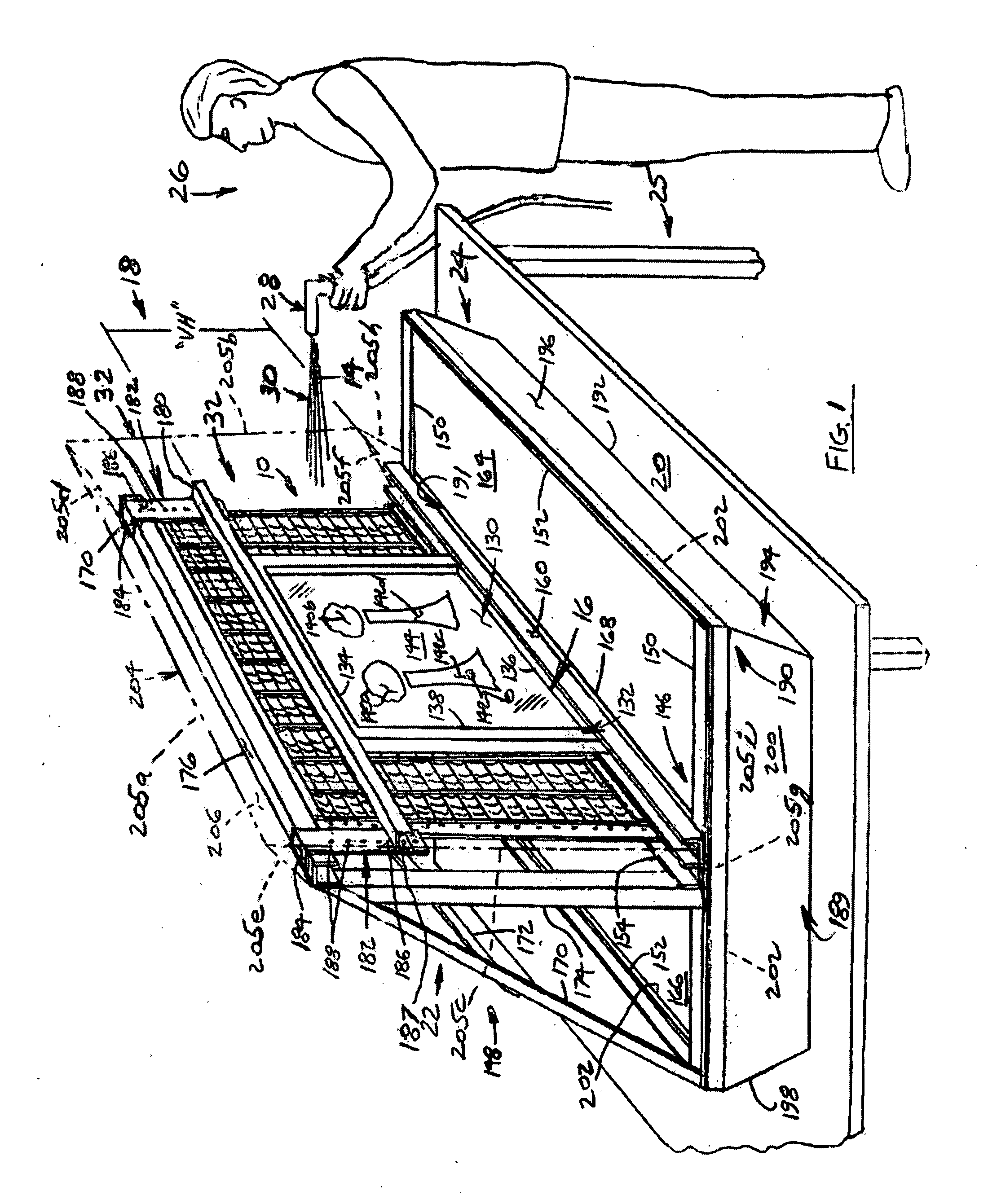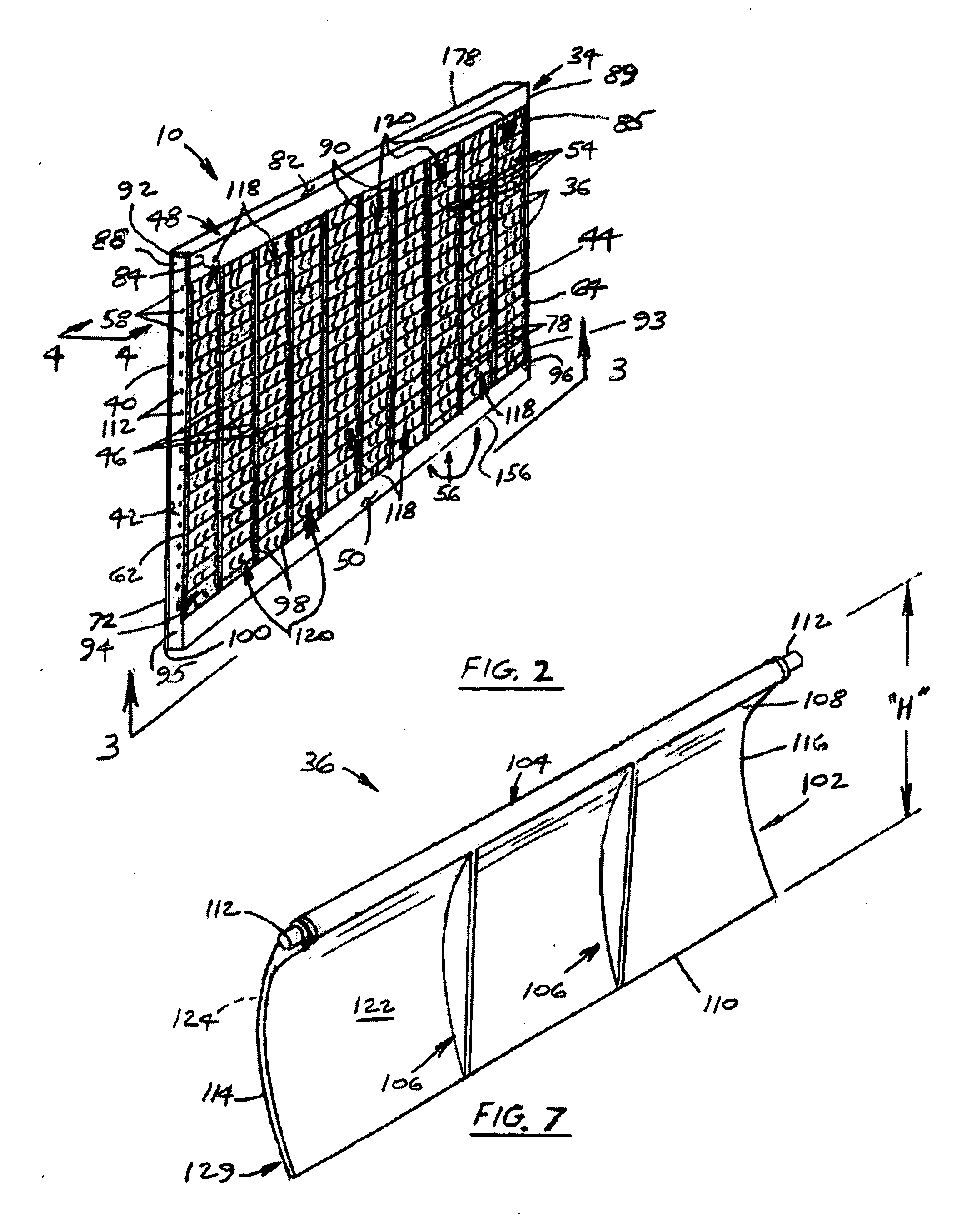Louvered spray guard for trapping overspray during spray washing of silk screens
a technology of silk screen and overspray, which is applied in the direction of cleaning process and apparatus, cleaning using liquids, chemistry apparatus and processes, etc., can solve the problems of silk screen relatively expensive to buy, high flammability of such solvents, and the inability to quickly dry the ink on the printed item, so as to minimize the splashing of washing liquid and reduce the amount of overspray. , the effect of reducing the amount of overspray
- Summary
- Abstract
- Description
- Claims
- Application Information
AI Technical Summary
Benefits of technology
Problems solved by technology
Method used
Image
Examples
Embodiment Construction
[0030] Referring to FIG. 1, therein is shown a louvered spray guard in accordance with the present invention, designated generally at 10, for receiving and trapping overspray 12 of a washing liquid 14 during spray washing of items such as a silk screen 16. Spray guard 10 is shown as part of a spray collection system 18 for placement on a support surface 20 for receiving, trapping, and additionally containing the overspray 12 of washing liquid 14 during spray washing of the silk screen 16. Spray collection system 18 includes a main frame 22 which supports the spray guard 10 over a collection tank 24 resting on the support surface 20 such as of a table 25. A person 26 is shown cleaning the silk screen 16 using a spray gun 28 which emits a spray 30 of the cleaning or washing liquid 14 such as hydrocarbon based solvent or a water based washing liquid. An optional spray shroud 32 is shown to catch the overspray 12 of the washing liquid 14. The spray collection system 18 collects the over...
PUM
| Property | Measurement | Unit |
|---|---|---|
| angle | aaaaa | aaaaa |
| angle | aaaaa | aaaaa |
| thick | aaaaa | aaaaa |
Abstract
Description
Claims
Application Information
 Login to View More
Login to View More - R&D
- Intellectual Property
- Life Sciences
- Materials
- Tech Scout
- Unparalleled Data Quality
- Higher Quality Content
- 60% Fewer Hallucinations
Browse by: Latest US Patents, China's latest patents, Technical Efficacy Thesaurus, Application Domain, Technology Topic, Popular Technical Reports.
© 2025 PatSnap. All rights reserved.Legal|Privacy policy|Modern Slavery Act Transparency Statement|Sitemap|About US| Contact US: help@patsnap.com



